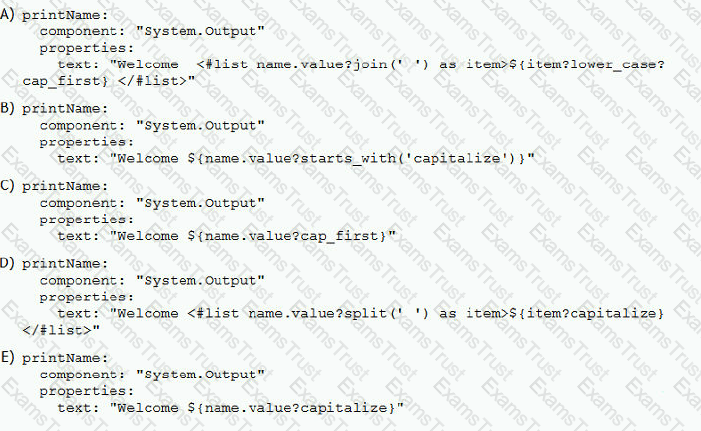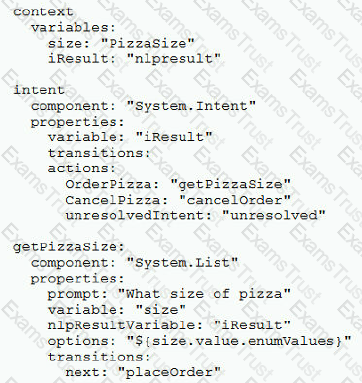Which two statements about skills are true?
Which statement is true regarding the default implementation of out-of-order messages?
You want your skill to transferconversations over to Oracle Service Cloud customer service representatives. Which type of channel do you create to enable the skill to do this?
You are advised to implement an 80/20 splitwith training and test utterances. This means that 80% of new utterances harvested from the conversation logs should be used as intent training utterances and 20% for testing.
Why is this a good practice?
You want the flow to navigate to the cancel transition immediately after the maximum number of failed attempts are exceeded in the System.ResolveEntities Components.
Which option must you use?
You have been asked to make recommendations to a customer on the value of having a catalogue of test phrases that you canuse for batch testing intents.
Which statement is the recommendation you would NOT make?
Which two statements describe what happens when a System.DatectLanguages component is used in a dialog flow?
You want your skill to prompt users for theirfirst name. The name must then be used in the welcome message at the beginning of each bot-user session.
Your user interface guidelines require that each part of the name begin with a capital letter (for example, John Doe or John William Doe).
Which two BotML code examples print the username correctly if the name is provided as "jOhn William doe" or "JOHN doe"?

You are writing adialogflowandyouare attheend oftheconversation.Forthe finalstate,you arenotsurewhethertouse areturntransition or use anexttransitionthatgoes tothestartof thedialogflow.
Which statementis true?
Consider the followingexcerptfromadialogflowcode wheresizeis a context variableof valuelist entitytype
PizzaSizewithvaluesSmall,Medium,andLarge:

Which two events will occur when a user starts a new conversation with the sentence "Order a Large Pizza"?
Error handlers can be defined in different locations with different scopes Which statement is FALSE regarding the placement of error handlers?